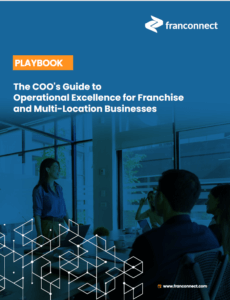Retail quality management represents the greatest challenge for multi-location brands today. As store counts grow, maintaining consistent customer experiences becomes increasingly difficult, with each location potentially undermining brand reputation through quality variations. For retail leaders, this inconsistency creates a perpetual cycle of reactive firefighting rather than strategic growth.
Quality management encompasses all processes and systems designed to deliver consistency across your network. Yet many brands rely on fragmented approaches with disconnected tools, manual inspections, and spreadsheets that can’t scale with their business. This transforms operations executives from strategic leaders into constant problem-solvers, forever playing catch-up with quality issues rather than driving innovation.
The emotional and financial toll is significant: stress over locations you can’t physically monitor, frustration at recurring problems despite intervention, and the measurable revenue impact of inconsistent customer experiences.
Let’s explore how leading brands are breaking this cycle and turning retail quality management into a competitive advantage.
The Cost of Quality Inconsistency
Picture this: a customer visits your flagship store in Chicago and has a remarkable experience. The following week, that same customer visits another location in Denver and barely recognizes it as the same brand. Merchandising is inconsistent, cleanliness standards have slipped, and staff seem uninformed about current promotions.
This scenario isn’t hypothetical. It’s the costly reality for retailers operating with fragmented quality management systems. When quality control relies on spreadsheets, email chains, and manual processes, inconsistency isn’t only possible but also inevitable.
The statistics paint a sobering picture:
- According to PwC’s Customer Experience Survey, 73% of customers point to experience as an important factor in their purchasing decisions.
- Research from Microsoft shows that negative experiences prompt 56% of customers to stop shopping with a brand.
- A study published in the Harvard Business Review found that differences in the quality of management processes—like setting targets, running operations, and developing talent—translate directly into higher performance across multiple dimensions, and these advantages persist over time.
The operational drain is equally significant. Regional managers become glorified troubleshooters, traveling from one location to the next, putting out fires instead of coaching for performance. Corporate teams waste valuable hours compiling reports from disparate sources rather than identifying and scaling best practices.
At the heart of this chaos lies the visibility gap. That’s the inability to see, in real-time, how locations are performing against critical quality standards. Without this visibility, retail quality management becomes increasingly reactive rather than strategic, with leaders making decisions based on outdated information, anecdotal evidence, or worse, gut feelings.
The Quality Management Transformation
Retail quality management is undergoing a fundamental transformation as brands recognize that consistent execution across locations directly impacts customer loyalty, revenue, and competitive positioning. This journey from reactive to proactive quality management represents a strategic shift in how retail organizations operate.
The transformation follows four distinct phases:
1. Standardization and Documentation
The journey begins with clearly articulated quality standards. Leading retailers develop comprehensive yet accessible documentation that defines what “good” looks like across every customer touchpoint. This includes:
- Visual merchandising guidelines with photo references
- Customer service scripts and scenarios
- Store cleanliness and organization standards
- Product presentation requirements
These standards eliminate the ambiguity that leads to inconsistency. Well-documented standards create a foundation where everyone understands what’s expected, reducing variation across locations.
2. Technology Integration
The second phase involves deploying technology that connects corporate expectations with field execution. Modern retail quality management systems replace disconnected spreadsheets and email chains with integrated platforms that:
- Digitize and standardize store audits and inspections
- Provide real-time visibility into compliance levels
- Automate task assignment and issue resolution tracking
- Deliver mobile access for field teams and store managers
These technological solutions create the infrastructure that enables quality management to be scalable across dozens or even hundreds of locations, without requiring proportional growth in oversight personnel.
3. Performance Measurement
As technology enables data collection, retailers establish quality metrics with the same rigor as financial KPIs:
- Store audit scores and trends
- Time to resolution for identified issues
- Customer experience metrics correlated with operational execution
- Compliance rates for critical standards
When quality becomes measurable, it becomes manageable. These metrics allow retailers to identify patterns and make informed decisions about where to focus improvement efforts.
4. Continuous Improvement Culture
The final phase establishes quality management as an ongoing discipline rather than a periodic initiative. Leading retailers:
- Use data to identify trends and systemic issues
- Share best practices from high-performing locations
- Implement testing methodologies for new standards
- Develop coaching programs that reinforce quality behaviors
What does this transformation look like in practice? Consider how one specialty retailer with 500+ locations transitioned from paper-based audits to an integrated quality management platform. They saw dramatic improvements in compliance, reduced administration time for field leaders, faster problem resolution, and ultimately, higher customer satisfaction scores.
This transformation is more than operational. It’s emotional. Retail leaders shift from constant worry about what might be happening to confidence in what is happening, backed by real-time data and systematic processes.
Practical Approaches to Multi-Location Excellence
Transforming retail quality management doesn’t happen overnight. Even with the best intentions, many retailers encounter significant challenges when implementing a comprehensive quality program across multiple locations. Addressing these challenges requires careful planning and strategic execution.
One of the most persistent obstacles is resistance to change. Store managers and field leaders who have always done things a certain way may view new quality standards as corporate overreach or unnecessary bureaucracy. Successful retailers overcome this by involving these key stakeholders in the development process, gathering their input on what practical quality measures would drive the most impact.
Another common barrier is the perceived burden of additional administrative work. Quality management that relies on manual documentation, email follow-ups, and spreadsheet tracking quickly becomes unsustainable as location counts grow. This is where technology becomes transformative—not by adding complexity, but by simplifying workflows through automation and intuitive interfaces.
The integration of technology into retail quality management creates several critical advantages:
- It eliminates double-entry data collection that wastes valuable time
- It creates standardized evaluation criteria that remove subjective interpretation
- It enables real-time visibility into location-specific and network-wide performance
- It automates issue assignment, escalation, and resolution tracking
Perhaps most importantly, technology bridges the communication gap between corporate expectations and field execution. When quality standards exist only in binders on shelves or buried in email attachments, they rarely drive consistent behavior. Modern systems make standards accessible exactly when and where they’re needed. Whether that’s during a new employee onboarding session or an in-store inspection.
Finding the right balance between standardization and local market flexibility represents another significant challenge. While consistency is the goal, rigid one-size-fits-all approaches often fail to account for regional differences, store formats, or market-specific factors. Leading retailers establish clear non-negotiable standards while allowing appropriate adaptation to local conditions.
The most successful quality management implementations address these barriers through a phased approach, starting with critical standards that directly impact customer experience and gradually expanding as the organization develops quality management maturity. This prevents the overwhelm that often leads to abandoned initiatives and builds momentum through early wins.
Measuring Success: The New Retail Quality Landscape
The effectiveness of retail quality management ultimately depends on its measurable impact on business performance. Leading retailers track several key metrics to evaluate how their quality initiatives drive operational excellence and financial results.
Customer experience consistency serves as the most direct measure of quality management success. Through mystery shopping programs, customer satisfaction surveys, and social sentiment analysis, retailers can assess whether customers receive a reliably excellent experience regardless of which location they visit. This consistency directly translates to increased loyalty, higher transaction values, and more frequent visits.
Operational efficiency metrics reveal how quality management affects store-level execution. Retailers monitor indicators like:
- Time to complete opening and closing procedures
- Display and promotion implementation compliance rates
- Employee productivity and retention
- Inventory accuracy and shrink rates
These metrics help quantify how standardized procedures and clear quality expectations streamline operations and reduce waste. When stores operate efficiently, labor costs decrease while customer service improves – a powerful combination for profitability.
Financial performance correlation provides the most compelling evidence of quality management’s value. Advanced retail organizations track the relationship between quality scores and key financial indicators like:
- Same-store sales growth
- Gross margin improvements
- Labor cost as a percentage of sales
- Average transaction value
These correlations transform quality from a subjective concept into a quantifiable business driver. When regional leaders can see that locations with the highest quality scores consistently outperform those with compliance issues, quality management gains credibility as a strategic priority rather than an operational nice-to-have.
Perhaps most significantly, quality management systems create the foundation for data-driven decision making throughout the organization. Instead of relying on anecdotes or gut feelings, retail leaders can identify exactly which operational factors drive performance and which locations need targeted intervention. This precision eliminates the guesswork from retail management and ensures resources focus where they’ll have the greatest impact.
Beyond statistics and operational metrics, the true indicator of successful quality management is the confidence it gives retail leadership. When executives and managers can definitively say “Yes, I know our customers are receiving a consistent brand experience at every location” without hesitation or qualification, they’ve achieved a competitive advantage that transcends individual KPIs. This certainty allows retail leaders to focus on innovation and growth rather than constantly monitoring for potential problems across their network.
Implementation Roadmap: Building Your Quality Management System
Implementing effective quality management isn’t an overnight process. It requires thoughtful planning and a phased approach that builds momentum through early wins while establishing the foundation for long-term excellence. Here’s a practical roadmap retailers can follow to transform their quality management systems.
Start with Critical Standards Assessment
Begin by identifying which operational standards have the most direct impact on customer experience and business performance. Rather than attempting to standardize everything at once, focus on the vital few areas that truly matter. This might include:
- Core customer service interactions
- Essential merchandising standards
- Safety and compliance requirements
- Brand-defining experience elements
Prioritizing these critical standards creates focus and prevents the overwhelm that derails many quality initiatives. It also delivers faster ROI as improvements target the most impactful areas first.
Build Cross-Functional Alignment
Quality management cannot succeed as a siloed initiative. It requires buy-in and participation from multiple departments:
- Operations leads who understand day-to-day store realities
- Training teams who will help implement new standards
- IT partners who support technology integration
- Finance stakeholders who validate the business case
- Field leadership who will champion the program
Creating a cross-functional steering committee ensures that quality standards balance corporate objectives with operational realities. This collaborative approach also builds the organizational support necessary for successful implementation.
Select the Right Technology Platform
Technology selection represents a critical decision in modern retail quality management. The right platform should:
- Integrate seamlessly with existing systems
- Provide intuitive mobile interfaces for field users
- Offer robust analytics and reporting capabilities
- Scale affordably as your location count grows
- Support your specific industry requirements
Many retailers find that purpose-built quality management solutions deliver faster implementation and higher adoption rates than generic tools or custom-developed systems. These specialized platforms incorporate industry best practices and typically require less configuration to match retail-specific workflows.
Implement with a Pilot Approach
Before rolling out quality management changes across your entire network, test the approach with a representative sample of locations. This pilot period allows you to:
- Validate standards in real-world conditions
- Refine processes based on field feedback
- Identify potential barriers to adoption
- Develop success stories for broader implementation
- Calculate preliminary ROI data
A successful pilot creates both proven methodology and internal advocacy that significantly increases the likelihood of successful network-wide implementation.
Scale Through Phased Expansion
With lessons learned from the pilot, expand your quality management system through carefully planned phases:
- Initial rollout to early adopters and high-performing regions
- Secondary implementation across remaining standard locations
- Final adaptation for specialized or international locations
- Continuous enhancement based on performance data
This phased approach allows you to refine your process with each expansion while building implementation expertise within your organization. It also creates natural momentum as early successes fuel enthusiasm for subsequent phases.
Establish Ongoing Governance
Quality management isn’t a one-time project but an ongoing discipline. Establishing governance ensures continuous improvement and prevents standards from becoming outdated or irrelevant. Effective governance includes:
- Regular review of standards based on business impact
- Clear processes for updating or creating new standards
- Accountability mechanisms at every organizational level
- Recognition systems that celebrate quality excellence
Retailers who build quality management into their regular business rhythms sustain improvements long after the initial implementation excitement fades.
The most successful retail quality transformations share a common characteristic: they balance operational rigor with practical flexibility. By following this roadmap, retailers can develop quality management systems that drive consistent excellence without creating unnecessary bureaucracy or administrative burden for their teams.
Unlock Your Retail Potential: The Quality Transformation
Consistent quality execution represents a hidden competitive advantage. By transforming fragmented operations into a systematic quality management approach, retailers gain the ability to deliver exceptional customer experiences at every location, every time.
This journey is both operational and emotional, replacing the constant anxiety of “what might be happening” with the confidence of knowing exactly how your brand standards are being executed across your network. The most successful retailers leverage clear standards, purpose-built technology, and data-driven insights to create a quality management system that scales with their growth rather than restricting it.
Take the first step today by assessing your current approach against the framework outlined in this article. Then, request a demo to see how FranConnect’s retail quality management solution can transform chaos into a competitive advantage for your brand. Your customers will experience the difference, your teams will appreciate the clarity, and your business will reap the rewards of true operational excellence.








 Ian Walsh
Ian Walsh








